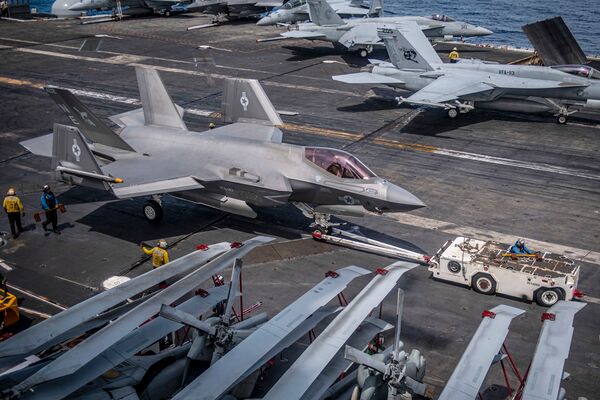
A F-35C taxis on the flight deck of Nimitz-class aircraft carrier USS Carl Vinson (CVN 70) in the South China Sea on 31 October 2021. A new USN strategy document reaffirms the importance of CVNs to future air power despite the platform's vulnerability to advanced anti-ship missiles. (US Navy)
A new US Navy (USN) strategy document has reaffirmed the importance of nuclear-powered aircraft carriers (CVNs) to future air power, despite the platform's vulnerability to advanced anti-ship missiles.
Released on 27 October, Navy Aviation Vision 2030–2035 said that large-deck CVNs are the most survivable, agile, resilient, and lethal airfields in today's security environment and will remain so for the future. Their large size supports an air wing with enough aircraft to simultaneously conduct long-range power projection, sea control, and surveillance missions in nearly all environmental conditions and sea states.
Similarly, the report said the nuclear power of CVNs affords increased capacity for stores, weapons, and aviation fuel as well as survivability features, space that otherwise might be used for propulsion fuel in conventionally-powered vessels. Together, the large size and nuclear power of CVNs enable them to conduct high-speed transits over great distances and then conduct military operations over more than 70% of the earth's surface for extended periods without the need for replenishment.
The United States is preparing for conflict against near-peer adversaries such as Russia and China. A 19 October Congressional Research Service (CRS) report said an issue regarding future aircraft carrier force levels is the prospective survivability of the platform against adversaries such as China with highly capable anti-ship missiles.
Looking to read the full article?
Gain unlimited access to Janes news and more...



